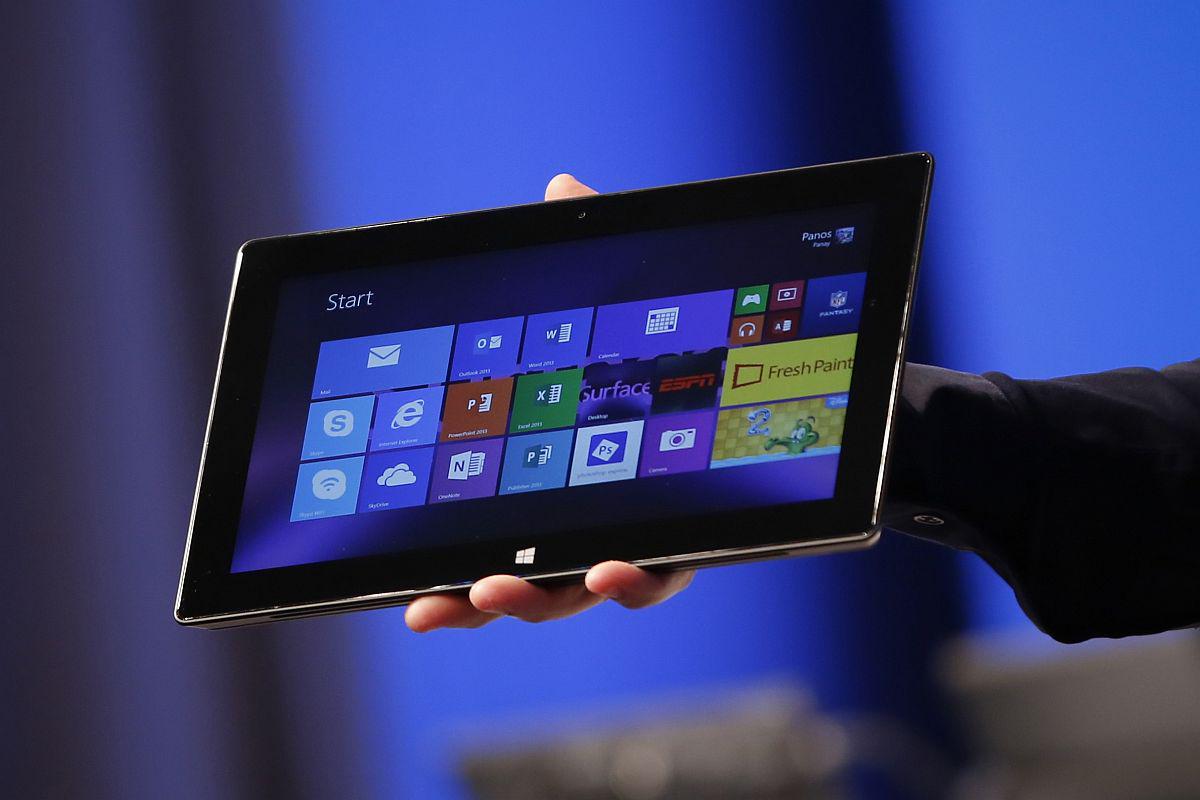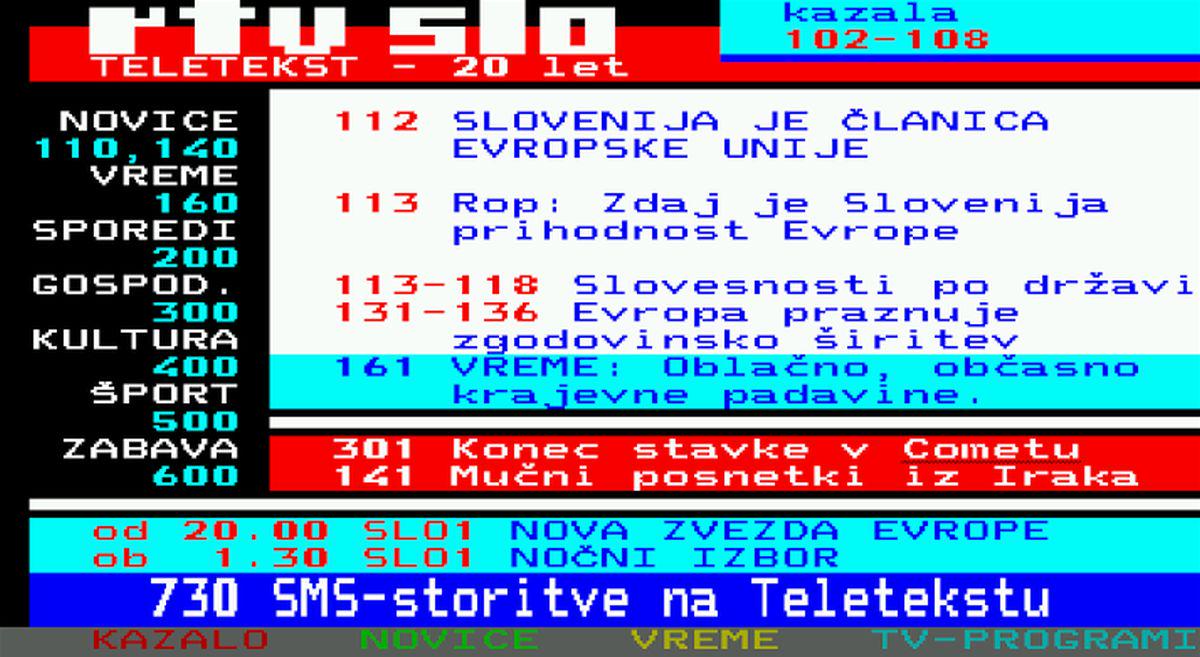
On the 7th May our teletext service celebrated 30 years of existence. Many of you wondered how many people still use teletext services to browse for information, especially in today’s era of the World Wide Web. Well, now you have the answer. 978 people, aged between 10 and 75, took part in the survey.
Here are the details of the survey: 10,9 percent of the survey respondents use teletext more times a day to browse for information, 7,9 percent use it once a day, 9,8 percent a number of times during the week, while 28,1 percent access it once a week or less. That’s a total of 56,7 percent of all the respondents. 40,7 percent of Slovenes don’t use teletext services, while 2,6 percent don’t even have access to it. To sum it up, almost a fifth of Slovenes, or 18,8 percent to be precise, use teletext every day.
85 percent of the teletext users choose RTV Slovenija’s teletext to look for information, while 13 percent use the teletext services of foreign TV stations.
Most people look for weather information
The most read teletext topic is weather. Weather is looked up by 81,1 percent of all teletext users. Its followed by daily news (73,5 percent), sports (72,4 percent), radio and television program schedules (71,9 percent) and traffic information (46,5 percent).
32,4 percent of teletext users access the service through the www.rtvslo.si website. Statistics show that the teletext is among the four most read subportals on this website.
10,8 percent of RTV Slovenija’s teletext followers use teletext subtitling of shows on pages 771 and 772, intended mostly for the deaf and hard-of-hearing viewers.
Teletext popular also in Germany
In order to show that telext is still popular elsewhere in Europe as well, we can also take a look at the results of a recent survey carried out in Germany. The results revealed that 44 million people in the country used the teletext of the ARD public television at least once in 2013. With 4 million people using the service every day it’s the most read teletext in Germany. On average 12,37 million viewers visited various teletexts of German television stations daily and 60 million viewers throughout the year.
Expected the teletext to "die" sooner
Many people ask me what will happen to us. "Will you just die and be shut down?" Well, that’s not quite right. The whole of Europe expects teletext, as one of the many media services, to remain present for another five to ten years."
That’s how Brane Nastran, the former chief-editor of RTV Slovenija’s teletext, replied when asked how the arrival of the Internet would affect teletext, in the "Prvi in drugi" show in October 2000. Teletext services were indeed switched off recently in several countries, but in many countries it is still a success story. The above-mentioned data shows that teletext has its regular audience in Slovenia as well. That can also be seen in the video survey, which you can watch in the video news on the right side of your screen.
"Is Ceefax (BBC's teletext service) not as important anymore in this age of the Internet? Why would someone use a country lane full of holes if you also have access to an information highway? The answer is because there is still something charming about that lane." This is how Sam Wollaston answered a question in the Guardian back in 2004, as to why people still use the teletext service. The teletext lives on despite the enormous development in communication technologies in the last ten years.
"We have been waiting for its death for ten or fifteen years. But is still hasn’t happened," says Erik Bolstad, the head of the new media department at the Norwegian public radio and television service. In Scandinavia teletext is still very popular. Two years ago approximately a fifth of the population in Sweden, Finland and Norway used teletext every day, while around a third accessed it every week. Results similar to those in Slovenia. In Denmark the percentage was even higher: almost half of the country’s population used it every week. In Finland, teletext remains the most popular news media - not because it is "beautifu", but because it works. "With teletext, all that counts is the content," says Heikki Lammi, the head of the online news at Finland’s public television YLE.
An alternative to switching it off is bringing it closer to the youth
In Great Britain, the cradle of teletext, BBC’s Ceefax had a slow death with the switching off of the analog television signal. Northern Ireland was the last to have it, on the 24th of October 2012. Someone nicely described what the loss of teletext in 2009 meant for him personally: "Teletext may be nearly forty years old now, but I can’t help thinking that it’s being killed off prematurely and unnecessarily. The fact is, analogue teletext services like Ceefax have been deemed to be old-fashioned and no longer relevant in the internet age. It’s true that teletext is hideously old-fashioned these days – in fact it has been for about twenty years. But to the millions who used it regularly, that hardly seemed to matter. The digital Red Button services can potentially do more – they look a lot better and are more interactive - but they can still be quite slow and glitchy, and they suffer from a complete lack of charm. Not only that, but there is also a lot less actual content. The great thing about teletext was that, despite its flaws, it was uncomplicated and generally reliable. It didn’t need modern graphics and gimmickry to pull in the punters; it was purely about information. And in that respect, it worked brilliantly."
In many places around the world decisions have been made to bring teletext closer to the younger audiences and new gadgets, instead of shutting it down. For example teletext applications for mobile phones have already been developed. Not least teletext is also considered to be your primary "second screen", referring to the practice of using a computer tablet or smart phone while watching TV.


































































